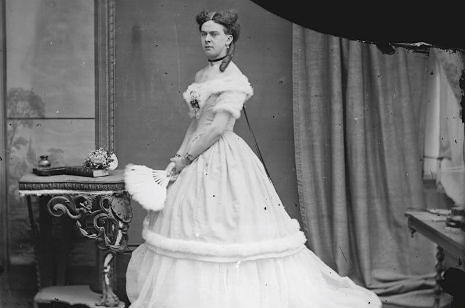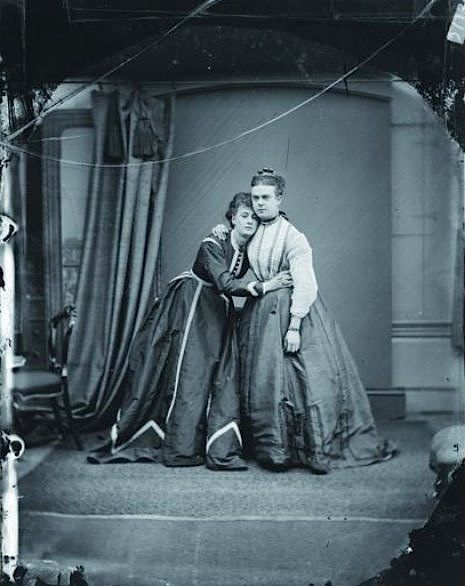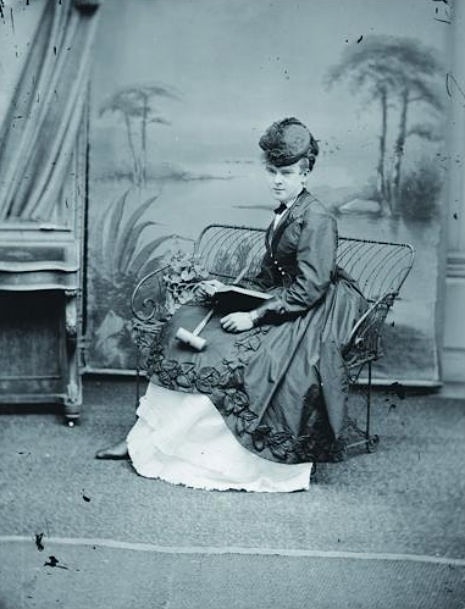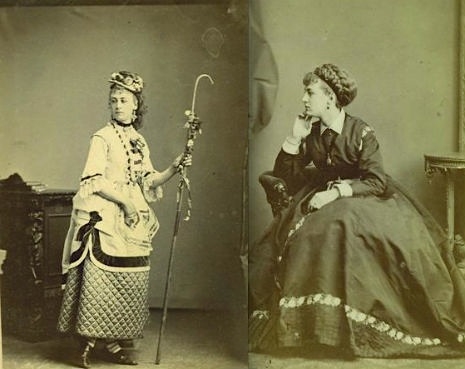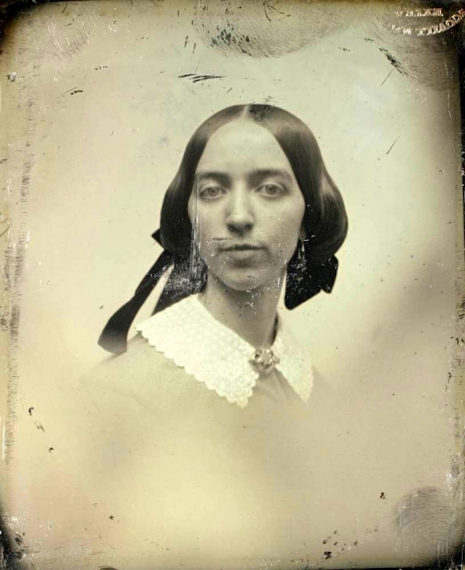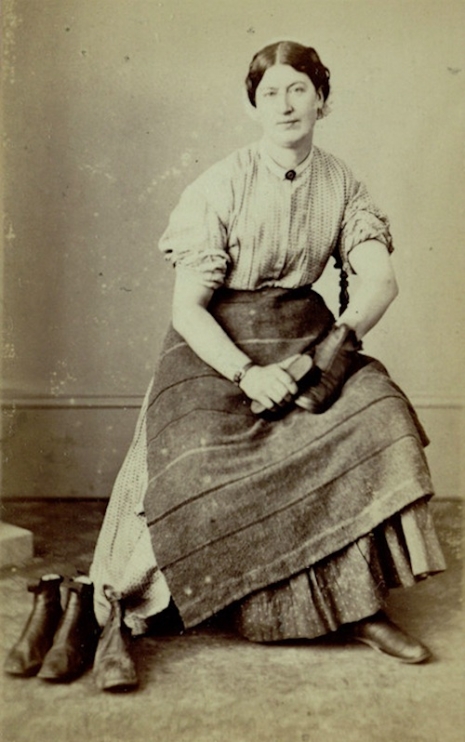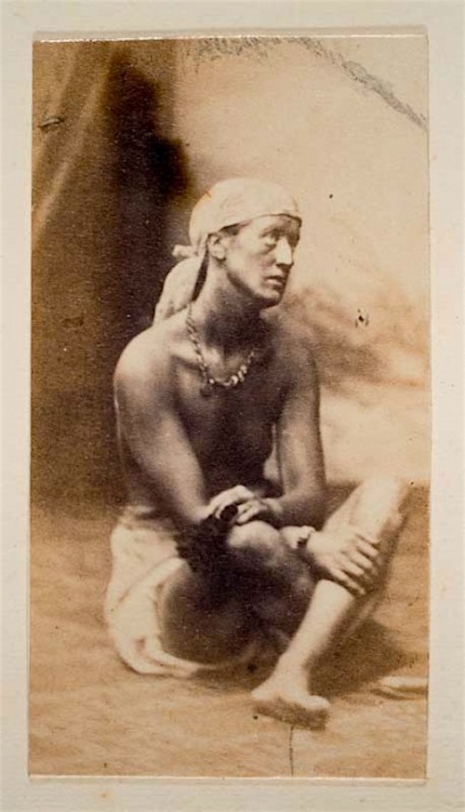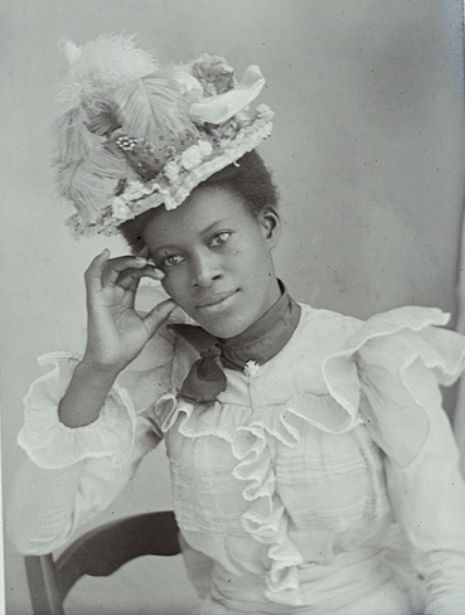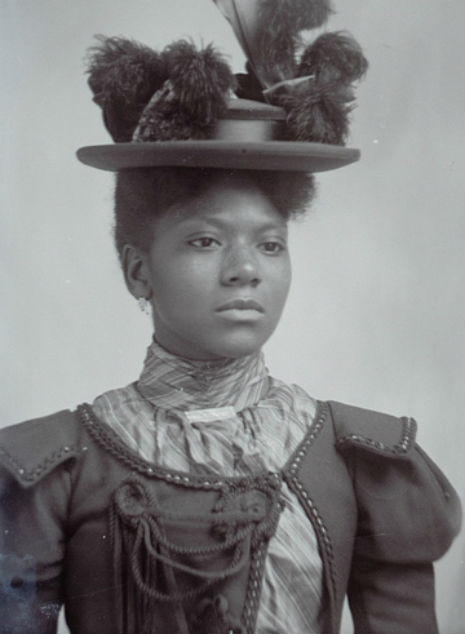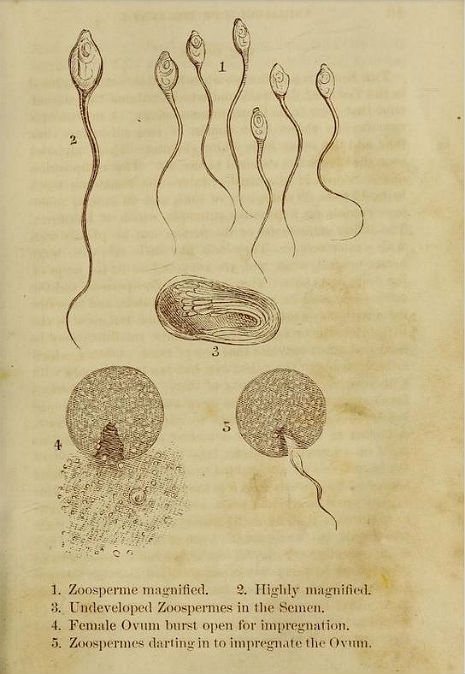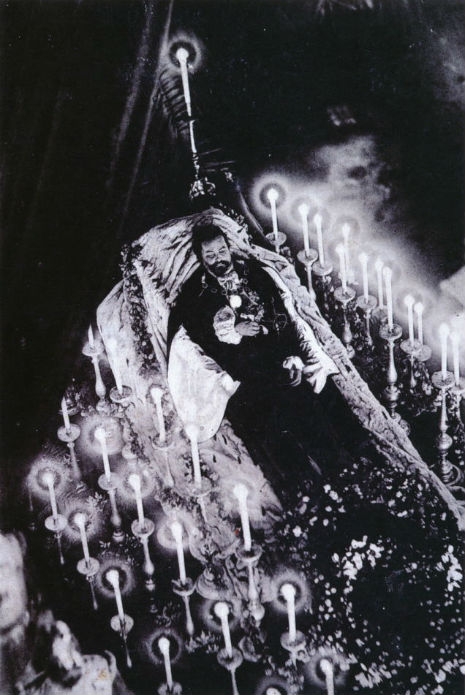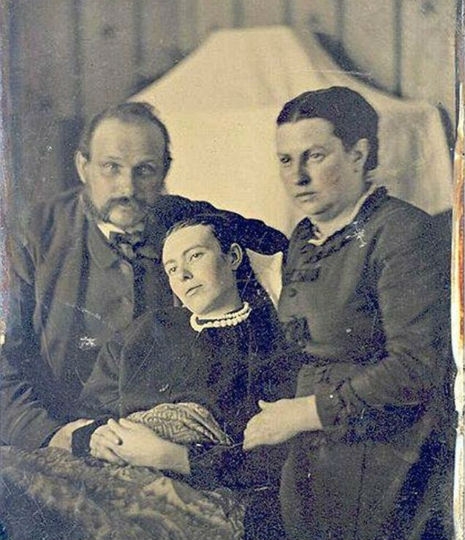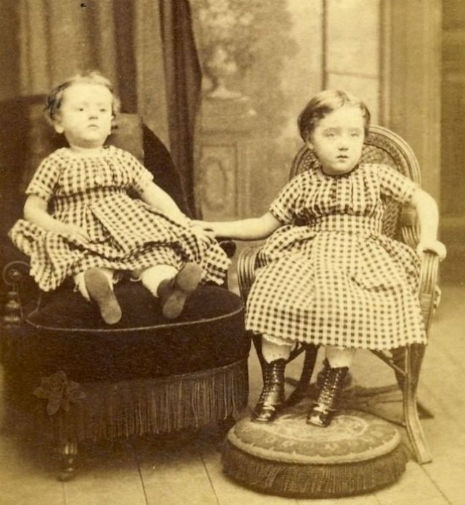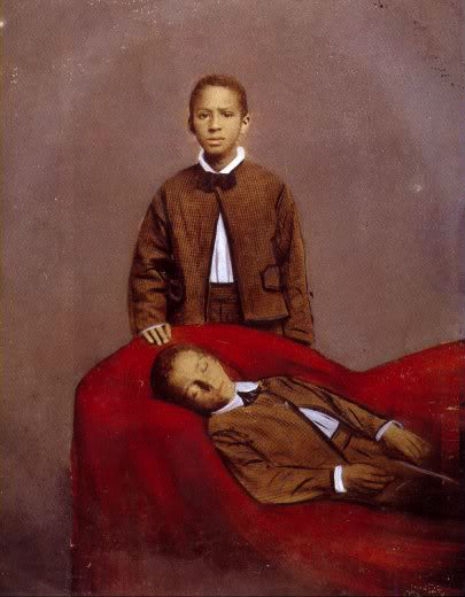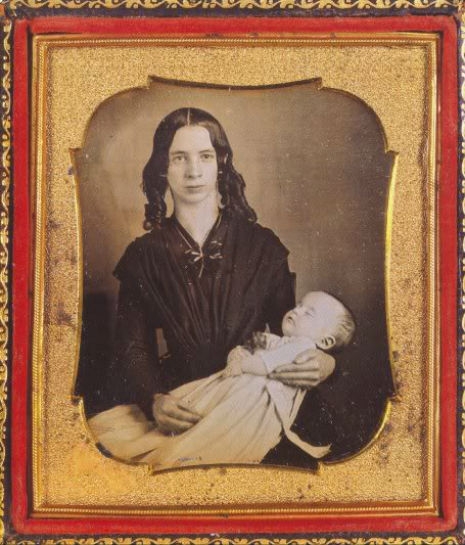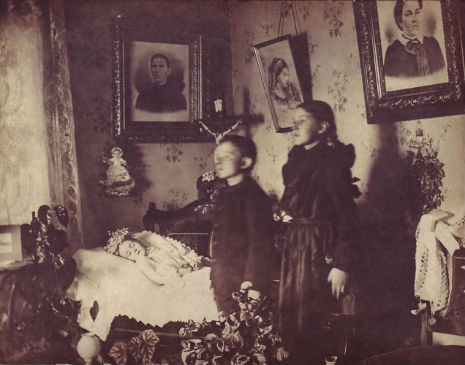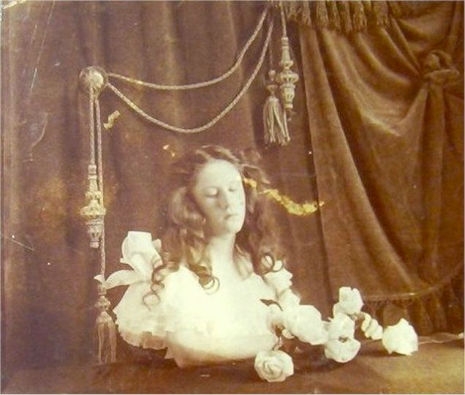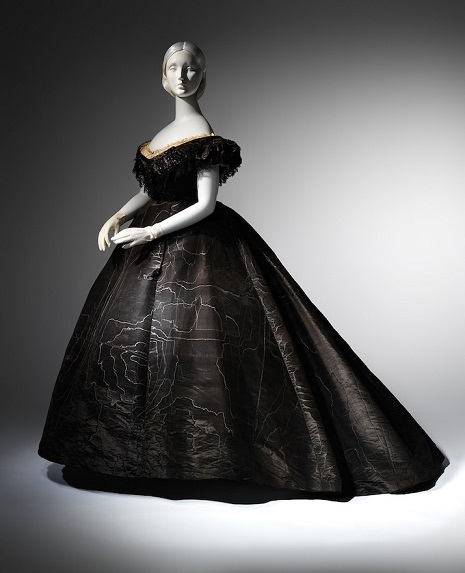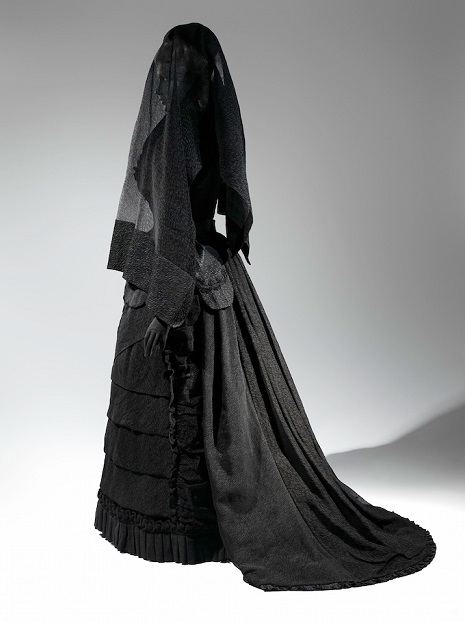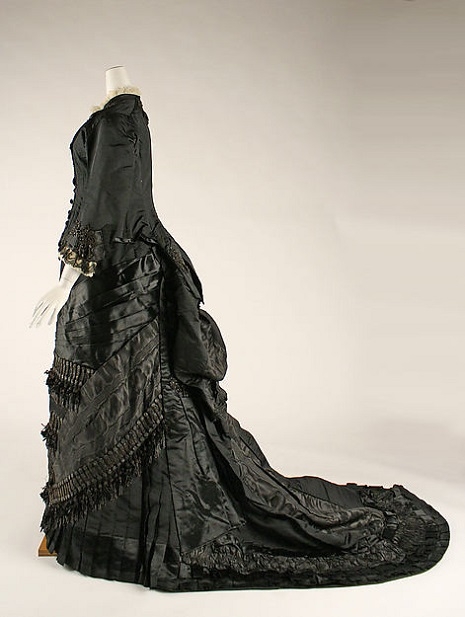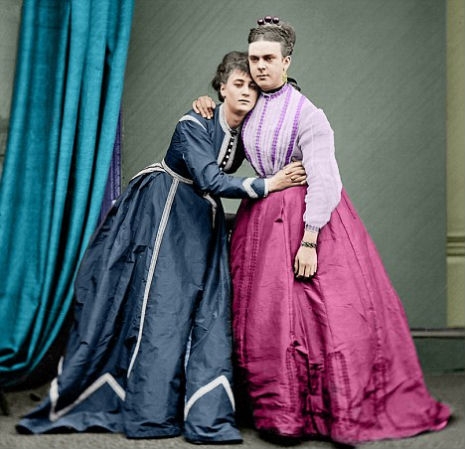
Victorian England is sometimes thought as a stuffy, sexually oppressive, puritanical world, where one did one’s duty, where children were seen and not heard, and table legs were covered to prevent any lustful thoughts. But in truth, Victorian England was a world full of hypocrisy, where sex, poverty and crime were rampant.
The great parliamentarian and Liberal politician William Gladstone was notorious for his visits to brothels where he claimed he was attempting to “rescue” fallen women. Gladstone had been an habitue of London’s bordellos since he was in his twenties with his visits to prostitutes creating feelings of guilt and remorse which he expunged by flogging himself. When Gladstone became the British Prime Minister, he was known to have invited prostitutes back to number 10 Downing Street for a cup of tea and a reading of some uplifting passage from the Bible. Happily married and a father of eight children, Gladstone kept visiting brothels until he was 82 years of age, but by then he was just watching the young girls at work.
Though it was the Protestant work ethic that was outwardly promoted, Victorian Britain was obsessed with sex. In a survey of prostitution made in 1838, James Beard Talbot noted that there were 219 brothels in Edinburgh, 770 in Liverpool, 308 in Manchester, 175 in Leeds and 194 in Norwich. In London there were 5,000 brothels. To give an idea of scale, there were only 2,150 schools, churches and charitable institutions in the great metropolis at the time. If all Europeans are supposedly related by bloodline to Charlemagne, perhaps it could be argued that most Brits alive today are related to a Victorian prostitute.
Of course not all Victorians relied on prostitutes for sexual pleasure, some, as Nigel Cawthorne describes in his book The Sex Secrets of Old England, achieved considerable gratification through the use of dildos (or “dil-dols”).
Advanced varieties were on the market in Victorian England. There were double-ended dildos that could be used by two women at the same time. Others had two prongs that penetrated vagina and anus simultaneously. Another had an attachment for the chin. There was also an astonishing amount of literature advising young ladies on the correct usage.
Those who couldn’t afford a dildo were encouraged to carve a penis-shape out of a candle, but not to use a carrot (because of its hardness) or an eau-de-cologne bottle (because of the damage it could inflict). Bananas (if available) were okay.
Queen Victoria could just about believe that homosexual men existed, but didn’t believe there could ever be lesbians, as “Women do not do such things.” Of course, there was considerable sapphic sex in the olde queen’s day and long before, with women living together as couples. The most famous was John Ferren and Deborah Nolan, two women who married in 1747 and lived disguised as man and wife until Nolan died, and husband Ferren was revealed to be a woman. Many other women disguised themselves as boys and successfully served in the British army and navy, for example Hannah Snell (1723-92), Phoebe Hessel (1713-1821) and Mary Anne Talbot (1778-1808), who went from drummer boy to powder monkey.
But in Victorian times, one of the most infamous cases was that of “Miss Fanny Park” and “Miss Stella Boulton,” whose arrest and trial became one of the era’s most shocking episodes.
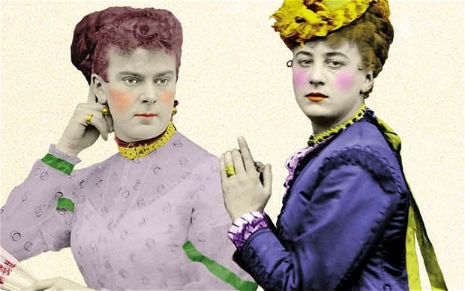
Misses Park and Boulton had been seen attending the Strand Theater in London, where they flirted with the men in the balcony. This pair of seemingly attractive Victorian women were in fact two men, Thomas Ernest Boulton (Fanny) and Frederick William Park (Stella).
From an early age, Boulton had identified as female and was encouraged to wear dresses. He formed a friendship with Park and the two became a theatrical double act, touring as Stella Clinton (or Mrs Graham) and Fanny Winifred Park to mainly favorable reviews. They also began frequenting houses and theaters while dressed in women’s clothing. A third man, Lord Arthur Clinton, a respected Liberal politician and godson to PM William Gladstone, became a lover/husband to Stella.
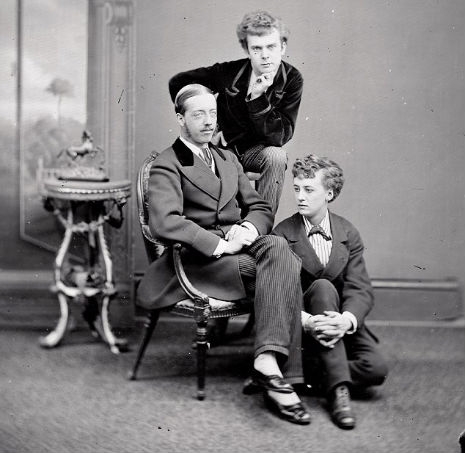
Boulton, Park and Clinton (seated).
In April 1870, Boulton and Park attended the Strand Theater dressed as men, there they changed their clothes, and re-appeared as the glamorous Fanny and Stella. Their flirtatious behavior attracted considerable male attention, as their biographer Neil McKenna explains Fanny and Stella: The Two Young Men Who Shocked Victorian England:
Fanny and Stella were hard to fathom. They had behaved with such lewdness in their box in the stalls as to leave not the faintest shred of doubt in even the most disinterested observer that they were a pair of hardened and shameless whores. And yet, close up, Stella was revealed as a beautiful, almost aristocratic, young woman who showed flashes of an innate, and most decidedly un-whorelike, dignity and grace.
One newspaper said later that she was ‘charming as a star’, another christened her ‘Stella, Star of the Strand’. And despite all the opprobrium that would later be heaped upon her, despite all the mud that would be slung at her and all the mud that would stick to her, she never lost the mysterious aura of a great and stellar beauty.
Mrs Fanny Graham, too, was clearly a woman of some education and breeding, and was certainly very far removed from your common-or-garden whore. Here in the saloon bar, it seemed harder to reconcile their obvious quality with the ogling, tongue-waggling, chirruping lasciviousness of the stalls. They spent half an hour or so in the refreshment bar.
Before they left, Mrs Fanny Graham, unaware that she was being watched, betook herself to the Ladies’ Retiring Room and asked the attendant there to pin the lace back to the hem of her crinoline where she had trodden on it. At a quarter past ten, Mr Hugh Mundell had been despatched in ringing tones by Mrs Graham to go and call for her carriage and soon afterwards the remainder of the party made a leisurely progress to the foyer and pushed their way through the noise and confusion of an emptying theatre to the waiting conveyance.
Just as the carriage was about to depart, one of the men who had been shadowing them all that evening jumped up and swung himself in through the door.
‘I’m a police officer from Bow Street,’ he said, producing his warrant card, ‘and I have every reason to believe that you are men in female attire and you will have to come to Bow Street with me now.’
These two young ladies were arrested and charged with “conspiring and inciting persons to commit an unnatural offence.”
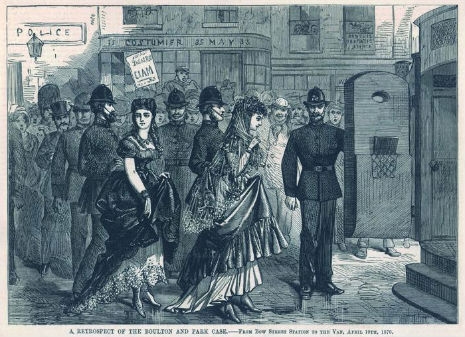

Clinton was named in the subpoena but it is believed he committed suicide rather than face the scandal, though it has also been suggested that he fled the country to live in exile. Fanny and Stella went to trial in 1871 (along with six others) and after a long, sensational trial, all were eventually found not guilty.
Neil McKenna’s biography on Fanny and Stella is published by Faber & Faber.
